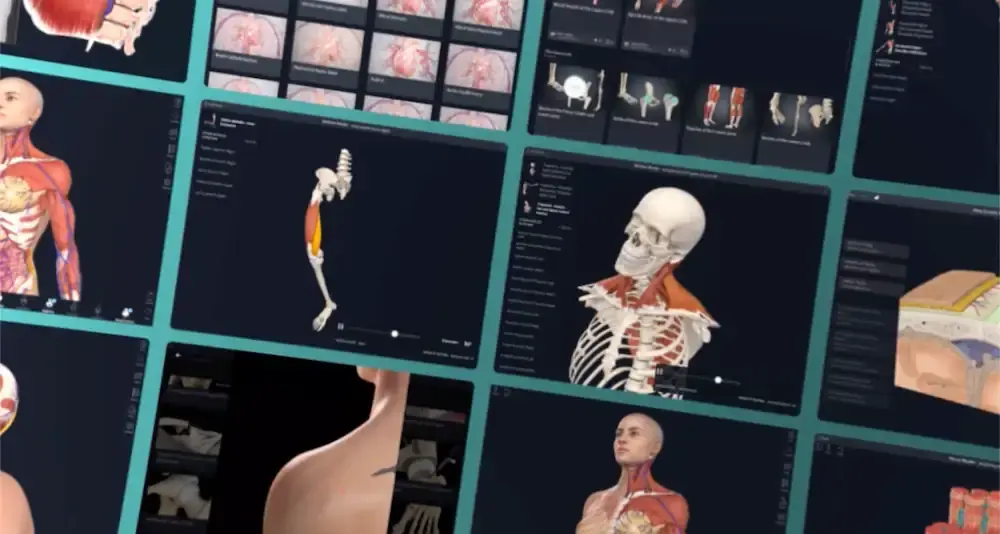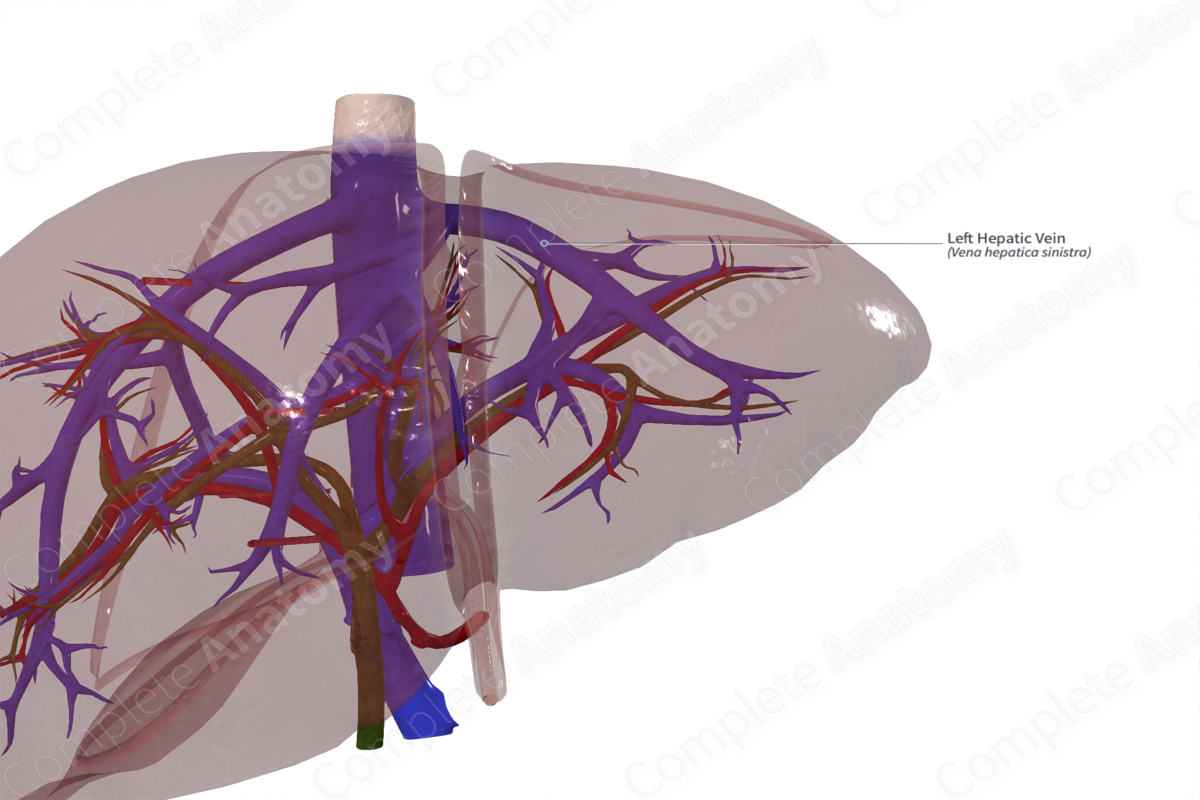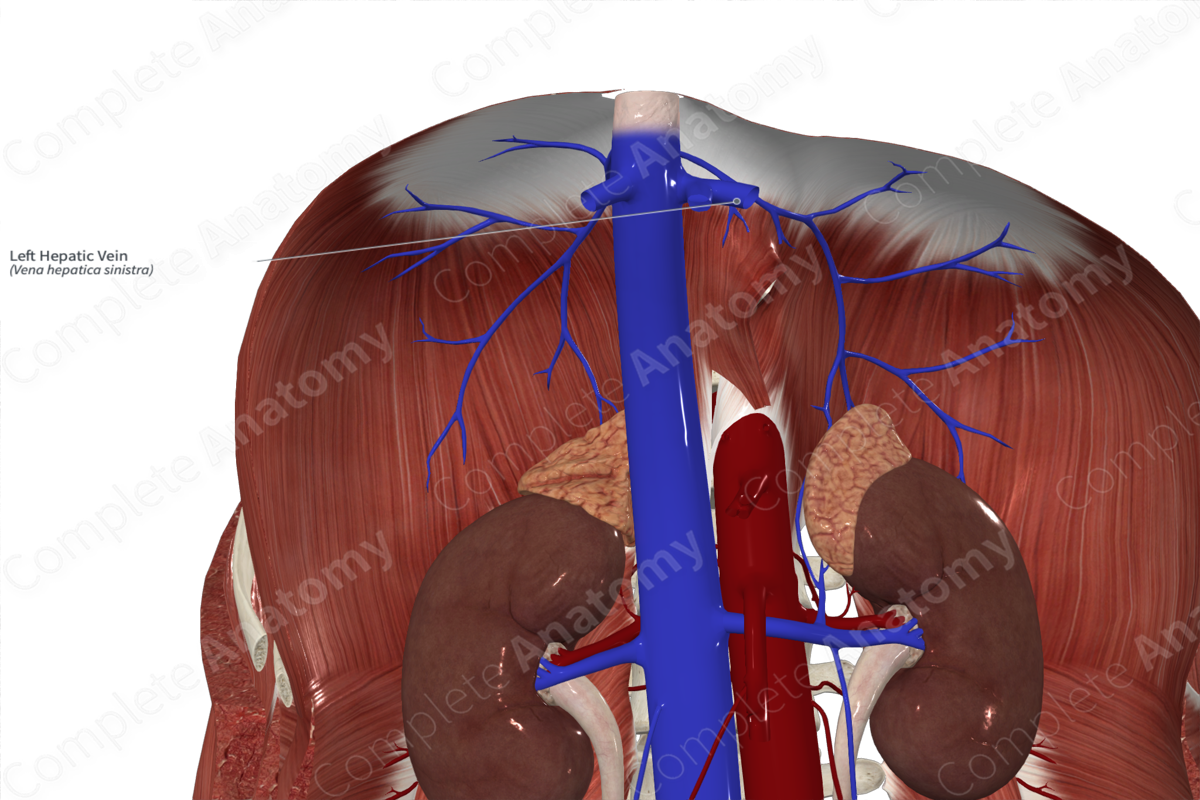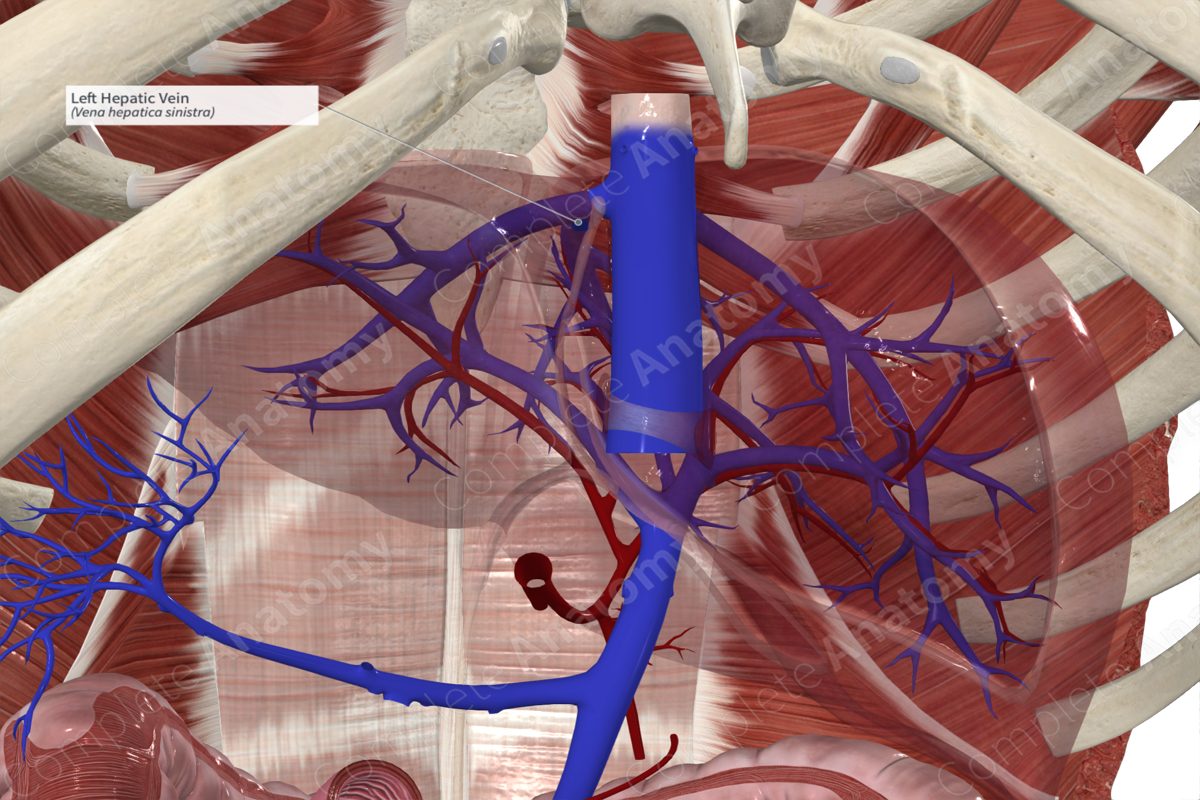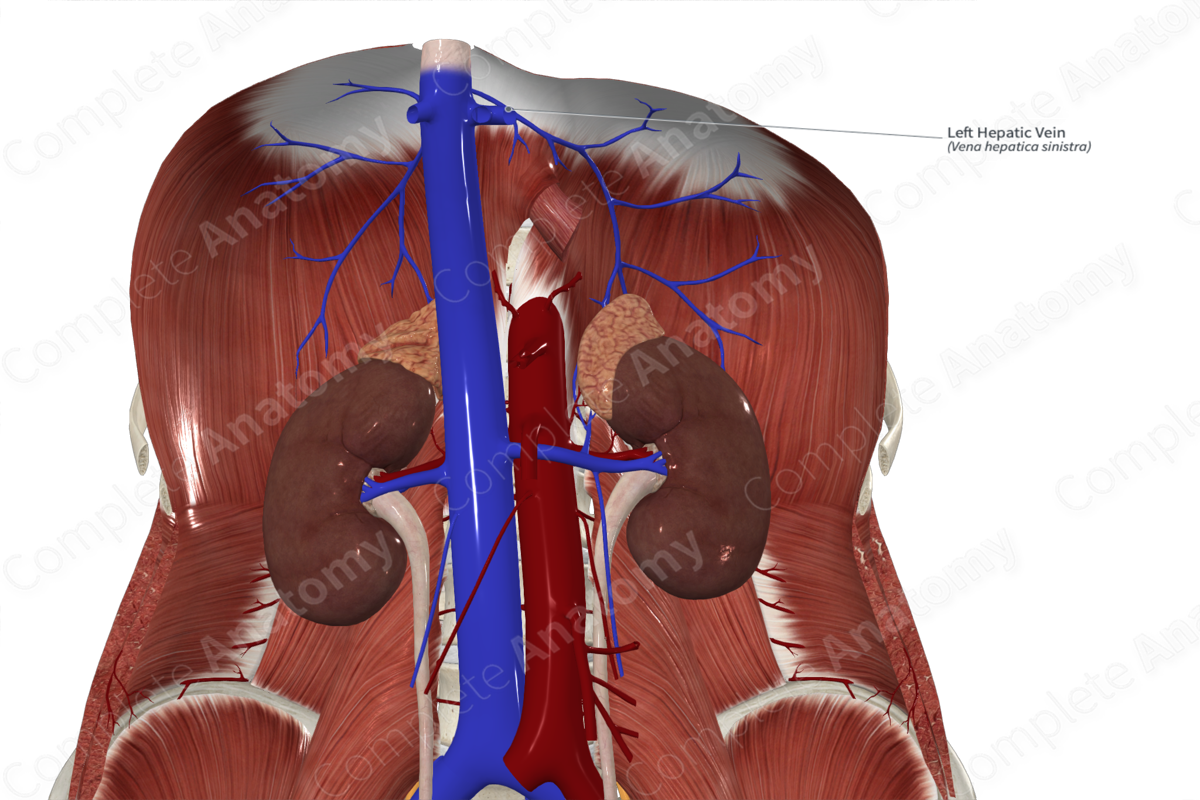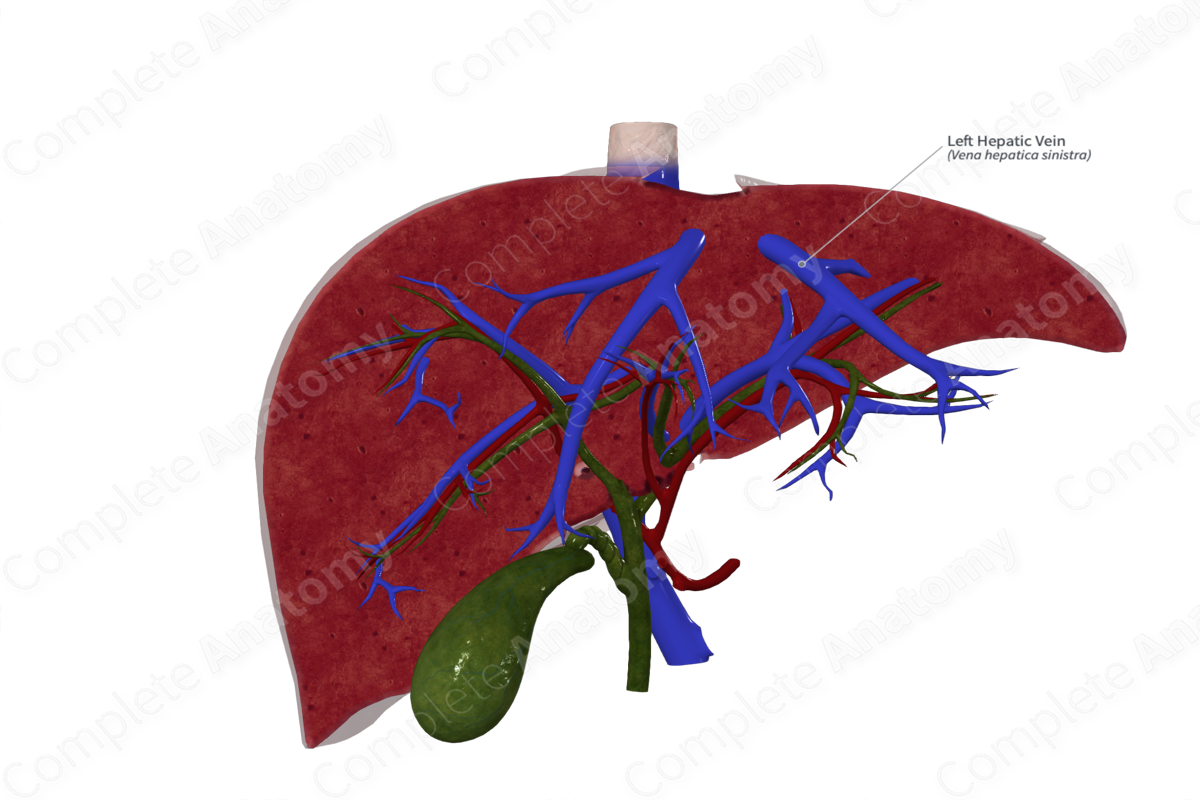
Quick Facts
Origin: Within the left portion of the liver.
Course: Joins the intermediate (middle) hepatic vein and terminates in the inferior vena cava.
Tributaries: Umbilical fissure vein.
Drainage: Left portion of the liver.
Origin
The left hepatic vein originates within the left portion of the liver between the medial and lateral sectors.
Course
The left hepatic vein typically joins the middle hepatic vein as it travels posterosuperior through the left portion of the liver, before it ultimately drains directly into the inferior vena cava.
Tributaries
The left hepatic vein receives an umbilical fissure vein, which typically runs between segments III and IV of the liver.
Structures Drained
The left hepatic vein drains the left portion of the liver, associated with segments II, III, and occasionally IV.
List of Clinical Correlates
- Liver transplantation
- Hepatic resections
References
Standring, S. (2016) Gray's Anatomy: The Anatomical Basis of Clinical Practice. Gray's Anatomy Series 41 edn.: Elsevier Limited.
Learn more about this topic from other Elsevier products
